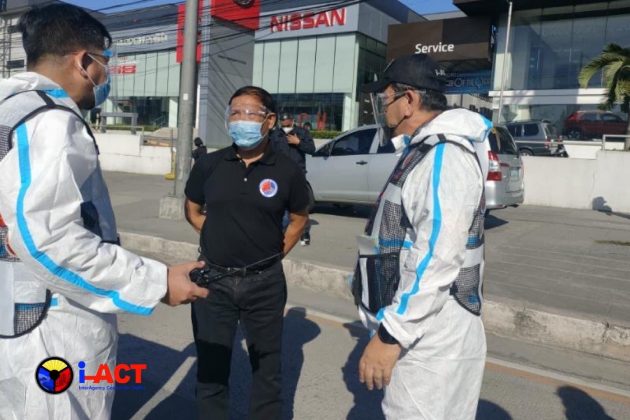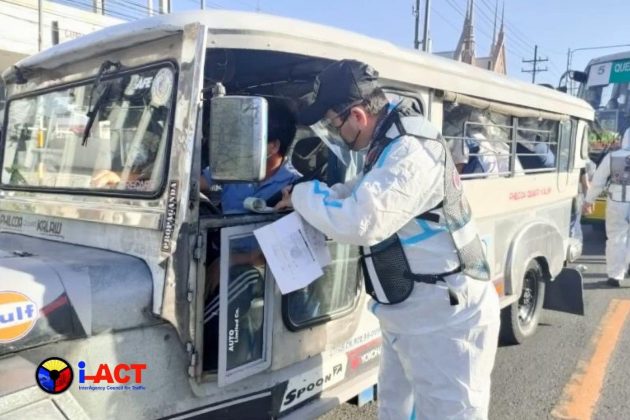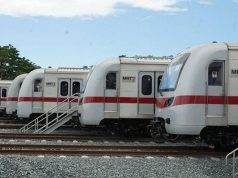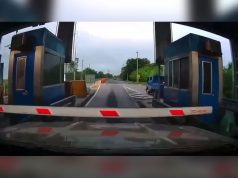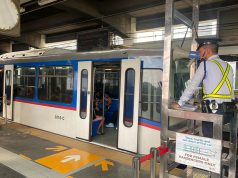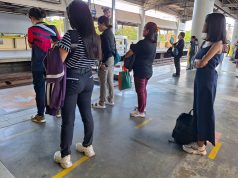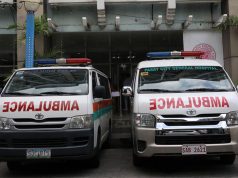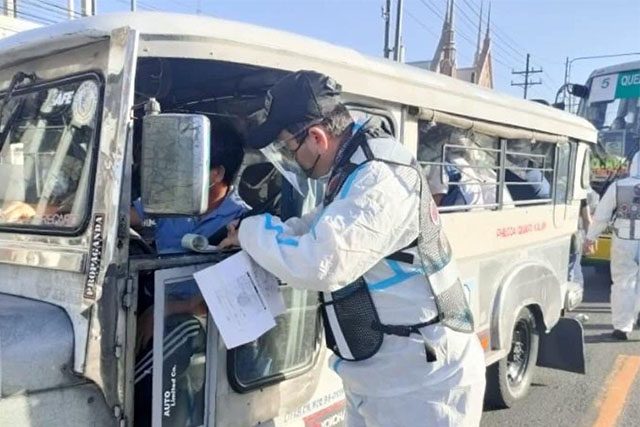
The transportation department was called out for letting its enforcers wear personal protective equipment (PPE) suits manning the checkpoints and inspecting the compliance of public transportation to minimum health protocols.
The DOTr on Tuesday shared photos of the InterAgency Council for Traffic (IACT) enforcers who are stationed on major roads to strictly enforce the agency’s guidelines amid the stricter enhanced community quarantine.
These include the adherence of all drivers, passengers and operators to the one-seat apart rule, the mandatory wearing of face mask and face shield policies, as well as the “no eating” and “no talking” rules inside public transportation.
The one-seat apart rule is among its physical distancing measures. This is nearly equivalent to a motorcycle’s length, according to the health department.
The “no eating” and “no talking” rule is also enforced to reduce the transmission of respiratory droplets and airborne particles containing the virus.
The DOTr said its enforcers wore PPE suits for them to be protected against the virus while conducting inspections.
Some Filipinos called out the agency and said that the PPE suits could’ve been used by healthcare workers instead, who are on the foremost frontlines of the battle against COVID-19.
RELATED: Philippines sees 10,000 new COVID-19 cases as tight curbs return to capital
Waste of PPE?
Others also pointed out that the enforcers are staying outdoors and in an open area which lessens the risk of potentially acquiring the virus.
“Sayang ang PPE. Dapat binagay na lang sa mga health care workers. Mas kailangan nila ‘yan. Nasa open air kayo, mas mababa ang likelihood ng transmission, face mask at alcohol sapat na. Ang ipatupad niyo ay ‘yung no contact apprehension,” a Twitter user said.
“Babad sila sa araw, maganda ang ventilation—huwag na pahirapan sa pagsuot ng PPE. Sayang ang ginastos dito,” wrote another online user.
“Protective suits outside medical contexts, in this heat? I feel bad for wage workers who have to put up with this hassle just (because) the government wants more security theatrics,” likewise wrote another Filipino.
Another Twitter user noticed that the enforcers were not wearing gloves, which is part of the outfit that protects the hands against virus transmission.
“Nakakatawa ‘yung naka-PPE pero walang gloves. So anong point?” the Twitter user asked.
“Resources are wasted by just a missing pair of gloves,” another online user said.
In an 11-page rationale, Philippine College of Surgeons said that PPE suit refers to any gear that protects against infection, namely gloves, face masks, N95 mask/respirators, goggles, face shield, gowns, scrub suits, coveralls, shoes, booties/shoe covers.
There are four levels of PPE suits worn in consideration of the risk of exposure of the individual to the virus.
A first-level PPE refers to a surgical mask with alcohol hand wash or spray. A second-level PPE refers to one wearing a surgical mask with goggles or face shield.
A third-level PPE refers to one wearing an N95 mask, goggles or face shield, a surgical cap, scrub suits, gowns and shoe covers.
A fourth-level PPE, meanwhile, refers to one wearing an N95 mask, goggles or face shield, double gloves, surgical cap, scrub suits, coveralls, dedicated shoes and shoe covers.
A pediatric neurosurgeon from the Philippine General Hospital shared pictures of how a third-level and fourth-level PPE suits look like, the types of suits worn by healthcare workers in COVID-dedicated areas of hospitals:
Here are our PPE recommendations in Philippine General Hospital. If you wish to donate, we need N95 masks and safety goggles, much more than coveralls or gowns. Thank you! ☎️155-200 @UPManilaOnline pic.twitter.com/DYQEIbItJL
— Ron Baticulon (@ronibats) April 24, 2020
Based on these definitions, the traffic enforcers wore the Level 4 PPE suit sans gloves. This type of PPE is usually worn in moderate or high-risk COVID-19 areas, according to PCS.





